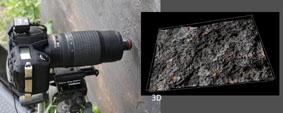3D USE-WEAR ANALYSIS
Hugues Plisson (PACEA-CNRS-University of Bordeaux 1)
Partners: AUSONIUS (Archéovision)
PACEA (CNRS & University of Bordeaux 1)
National Prehistory Centre (Ministry for Culture and Communication/DG1/Department of Archaeology)
Joint Research Programme for decorated cave datation: Gard-Ardèche
Parque Arqueologico do Val do Coa
Financing: €26,358
Duration: 2 years (1st January 2012 – 31st December 2013)
Recruitment: Elric Delord (15/06/12 to 15/10/12) University of Bordeaux 3
This project offers to develop and set up the material and software interfaces supporting the 3D survey and analysis integration to the coverage surveys of the archaeological remains and objects. The field of application will cover palaeolithic art and the associated lithic tools. It combines the expertise of the Archéovision 3D technological platform, the archaeologists of PACEA who are specialised in use-wear analysis and the ones of the National Prehistory Center regarding cave-painting and parietal art. The archeological application fields will be the engravings and/or petroglyphs from Val do Coa (Portugal), the Font de Gaume cave (Dordogne) and the Deux Ouvertures one (Ardèche).


